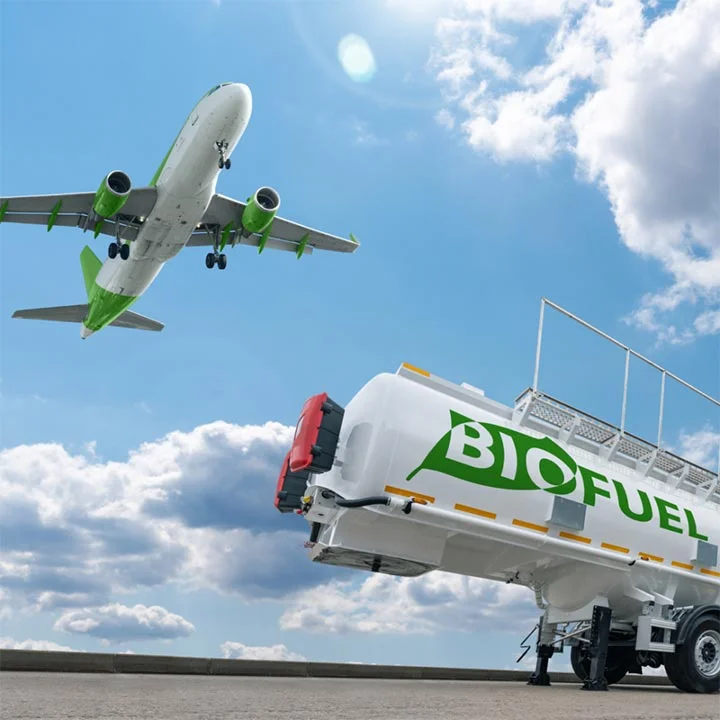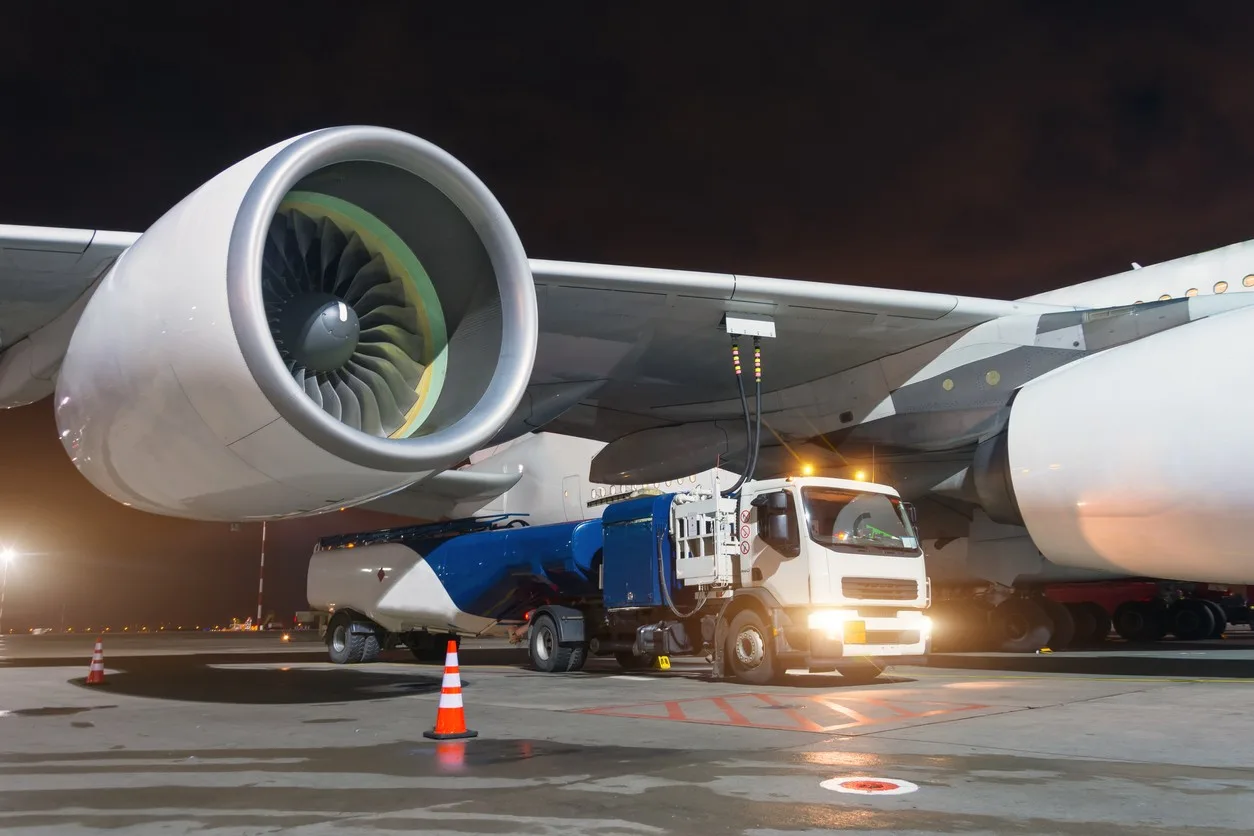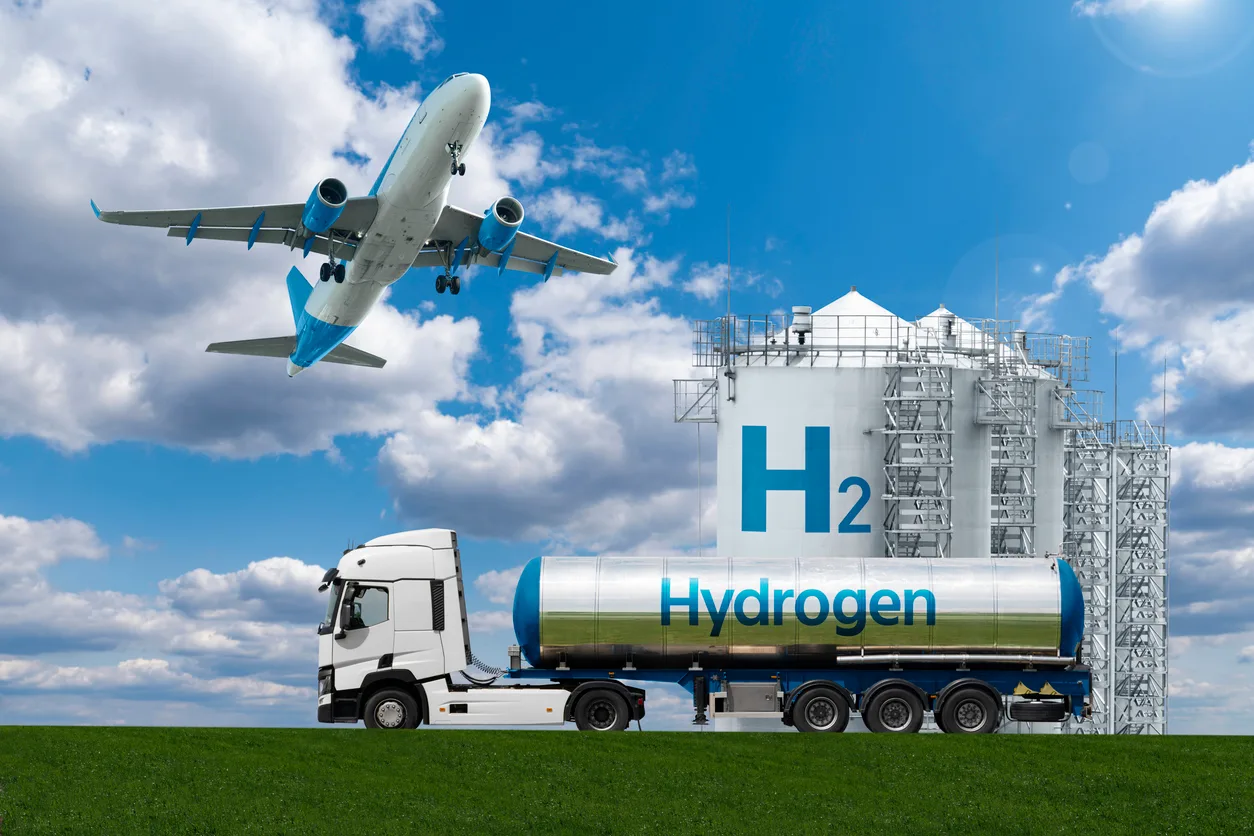
Jet zero: The challenges of sustainable aviation fuel
It’s more than 15 years since the first commercial flight using sustainable aviation fuel (SAF).
In early 2008, Virgin Atlantic and Boeing successfully flight-tested a Boeing 747 using a 20% blend of a bio-jet fuel derived from babassu and coconut oil in one engine. At the time, it was heralded by the aviation industry as an exciting milestone on the path to decarbonisation, but critics called it “greenwashing”.
However, 15 years later, the discussion hasn’t moved on. The aviation industry is still committed to developing SAF as a key pillar to decarbonise. Still, adoption and the development of supply have been slow, and critics have been vocal in opposition to both the business and environmental cases for generating more demand for a biofuel that they suggest is doing more harm than good.
The problem is that few other routes to net zero have emerged in the last decade and a half. Aircraft have become more fuel efficient, but that average rate of greater efficiency – at 1.8% – is well below the average growth in demand for air travel, which the International Energy Agency (IEA) estimates is around 5% year-on-year. Although aviation accounts for a relatively small share of global emissions (2-3%), that number is rising, and the industry is one of the most challenging to decarbonise.

New technologies, such as electric or hydrogen-powered aviation, show promise but will have little impact on emissions in the 2050 timeframe. Carbon credits and offsetting also have a role to play, but airlines and policymakers have yet to develop a suitable scheme.
That is why – despite the criticism – sustainable aviation fuel – made from waste resources like grease and waste oils, seed oils and renewable biomass – or synthetic electrofuels remain the industry’s best bet.
They are already being blended with standard jet fuel as an alternative “drop in” fuel, and the International Air Transport Association (IATA) estimate that SAF could contribute around 65% of the reduction in emissions needed by aviation to reach net zero in 2050.
Can supply meet demand?
However, the obvious elephant in the room is that this would require production levels to reach almost 450 billion litres to meet demand, a dramatic increase from the 300 million litres of SAF produced in 2022. There’s only so much grease and waste oil to go around, which will mean greater pressure to convert land to grow crops to use as feedstock.
It may not be too long before the increased carbon emissions from land-use change, driven by higher demand for biofuels, outweighs the benefits of reduced fossil fuel use.
As the aviation industry continues its strong post-pandemic recovery – recent BloombergNEF analysis suggests global jet fuel demand is set to jump 25% in 2023 compared to 2022 – and we enter the busy holiday period for air travel, we wanted to use this edition of The Commodity Perspective to frame some of the biggest sustainability challenges ahead for the industry.
What is sustainable aviation fuel (SAF)?
SAF is a non-fossil-based fuel that can be used to blend with or eventually replace traditional kerosene-type jet fuel. However, IATA estimated that it only accounted for 0.1-0.15% of total aviation fuel demand in 2022. An indication of the scale of the challenge ahead.
SAF is currently the most suitable low-carbon alternative to traditional jet fuel – a gallon emits up to 80% less CO2 – because it’s produced mostly from sustainable feedstocks but is designed to have a very similar chemistry and energy density to kerosene-based fuel, so it can be used as a ‘drop-in fuel’.
Most approved SAF production pathways turn a variety of feedstocks into synthetic kerosene (SK). The most established production method uses hydrogenated esters and fatty acids (HEFA) from vegetable oils and waste oils, including used cooking oil, animal fats, and other fatty acids. The advantage of HEFA fuels is that the infrastructure is already in place to support large production volumes, but it’s limited by the availability of suitable feedstock.
Fischer-Tropsch Synthetic Paraffinic Kerosene (FT-SPK) is another pathway being explored for commercial use. Fischer-Tropsch synthesis involves converting carbon-rich materials such as biomass (including municipal solid waste), natural gas, or coal into a synthesis gas (a mixture of carbon monoxide and hydrogen). This gas is then converted into liquid hydrocarbons through a chemical reaction over a catalyst. The flexibility of feedstocks for FT-SPK makes it a potentially attractive medium-term alternative to HEFA production.
Longer-term and much more ambitious for decarbonisation is using the FT process to create ‘Power-to-Liquid’ or ‘Electro’ fuels. Renewable electricity (from solar, hydro or wind) extracts hydrogen from water using electrolysis.
This green hydrogen is used to convert CO2 into carbon monoxide. Then, using FT synthesis, this carbon monoxide and more green hydrogen is converted into a wax that can be upgraded to SK.
In theory, this process can be truly carbon neutral, offering a tantalising prospect for the future if this e-fuel can be commercially viable and competitive with jet fuel.

The challenges for SAF
There are complex challenges ahead for SAF to become commercially viable at the scale the airline industry needs. The demand is growing from an aviation industry that knows it must decarbonise, but supply is lagging far behind. Total worldwide offtake agreements for SAF have been growing slowly; there are currently only 114 agreements in place, but more than half of those have been agreed in the last two years.
IATA has said it expects SAF production to reach 30 billion litres by 2030, but the industry only managed to produce 300 million litres in 2022, and planning and development of production facilities can take several years before commercial production is possible.
There is also the obvious – but little mentioned – issue that the volume of biofuel needed can’t possibly exist without significant land-use change, deforestation and the resulting pressure on food supply.
There isn’t enough feedstock for the current SAF pathways.
Access to SAF also remains narrowly distributed across a relatively small number of strategic airports, mostly in Europe or North America. Considerable investment in infrastructure will be needed to ensure that all countries, including developing economies, benefit from a thriving and decarbonising aviation industry.

Environmental
SAF is produced from various feedstocks, such as cooking oil, plant oils, municipal waste, and agricultural residues. The sustainability of these feedstocks is a concern, particularly in terms of deforestation, land use change, water use, biodiversity, and competition with food crops. Municipal waste and waste oils also have a limited supply, which puts SAF in competition with other biofuel production – like biodiesel and hydrotreated vegetable oil (HVO).
While SAF can significantly reduce emissions directly from the aircraft compared to conventional jet fuel, the total emissions depend on the feedstock and production process. We must look at the entire lifecycle of SAF, from feedstock production to fuel burning, to judge the net reduction in emissions.
Financial
Currently, SAF production is limited and more expensive than conventional jet fuel. Scaling up production to meet the growing demand for air travel without compromising environmental standards is a significant challenge. This includes developing the necessary infrastructure and technology to produce SAF at a larger scale.
The higher cost of SAF compared to conventional jet fuel is a large barrier to adoption. IATA estimates that in 2022, even the relatively marginal purchases of SAF by aircraft operators came at an additional cost to the industry of between $322 million and $510 million. That gap will close as the technology and production scale, but probably not quickly enough for net zero unless governments and consumers are willing to pay more for greener flights.
Regulatory
There are significant regulatory challenges to increasing the supply of SAF. This includes evolving the certification and approvals process for new production pathways whilst maintaining safety and also monitoring feedstock standards to ensure sustainable practices.
In terms of policymaking, much of the focus over the last few years has been on aviation emission reduction targets and net zero commitments from the airlines. This has created demand, but now global governments and policymakers must balance the carrot of financial incentives and the stick, including SAF blending mandates, to ensure a proportionate approach to increasing supply and demand.
Thus far, the U.S. government has favoured incentives (the Inflation Reduction Act (IRA) gave $3.3 billion of tax credits for SAF producers), whilst the E.U. has looked to support mandates and phasing out allowances given to the aviation industry under its Emissions Trading System (EU ETS).
Safety
Ensuring the safety of using a 50/50 blend of SAF in aircraft engines is paramount. The stakes are much higher for the aviation industry than if your car running on biofuel breaks down. Some evidence suggests that some biofuels, particularly biodiesel – if not prepared correctly – can contribute to corrosion and a build-up of engine deposits, which can lead to failure. That is not an option at 36,000 feet, so safety must be a big part of the overall SAF conversation, even when the climate need is so pressing.

What does the future look like for sustainable aviation?
Aviation has always been about innovation. It’s how we evolved from the Wright brothers’ first powered flight to Concorde in 70 years, but net zero by 2050 may be the industry’s biggest challenge. Whether or not SAF is the best choice for aviation to decarbonise feels like a moot point at this stage. Creating more demand for biofuel is certainly controversial, particularly as the certification around the sustainability of feedstocks remains opaque at best, but – despite the critics – the industry is putting all its money on developing SAF into a viable replacement for traditional jet fuel.
Regardless, innovation, including aircraft efficiencies and airframe redesigns, will need to accelerate alongside SAF to maximise all possible energy alternatives. This includes:
Advanced SAF feedstocks
There has been excitement about using microalgae as a SAF feedstock. Algae can produce high amounts of lipids (oils) suitable for biofuel production. However, the production costs and scaling challenges are still too great to be of any commercial value currently.
Likewise, carbon capture and utilisation (CCU), which could be used in the ‘Power to Liquid’ process to create a genuinely carbon-neutral SAF is still mostly a theoretical option.
Hydrogen
Using green hydrogen in the ‘Power to Liquid’ process for producing SAF has shown some potential if it can be more cost-effective. Hydrogen is also viewed as a possible long-term alternative to SAF, in either fuel cells or pure fuel.
However, liquid hydrogen fuel has a lower volumetric density despite having a greater energy density than traditional jet fuel. The volume of fuel required for a commercial flight would occupy a space four times larger than that of jet fuel. This would require a significant redesign of conventional airframes.
Electrification
With recent advances in battery technology, there are also small hybrid and fully electric aircraft currently in development. However, the commercial reality of electric planes for even short journeys is still a generation away.
Even the most optimistic industry observer would agree with the IEA that aviation isn’t currently on track to meet its net zero commitments. The industry and policymakers are betting on sustainable aviation fuel, but we’re still far from commercial viability at scale, and real sustainability concerns remain.
We encourage the industry and policymakers to be fully transparent about the enormous task ahead and start building the narrative that consumers will inevitably have to pay more for flights to control overall demand better and reduce emissions.
